-
 Bitcoin
Bitcoin $82,268.0001
-4.04% -
 Ethereum
Ethereum $1,777.8015
-5.02% -
 Tether USDt
Tether USDt $0.9997
-0.03% -
 XRP
XRP $2.0017
-5.57% -
 BNB
BNB $584.3181
-3.27% -
 USDC
USDC $0.9999
-0.02% -
 Solana
Solana $113.9101
-10.18% -
 Dogecoin
Dogecoin $0.1582
-7.95% -
 TRON
TRON $0.2338
-1.55% -
 Cardano
Cardano $0.6241
-8.78% -
 Toncoin
Toncoin $3.5629
-12.05% -
 UNUS SED LEO
UNUS SED LEO $9.3926
0.04% -
 Chainlink
Chainlink $12.4716
-8.37% -
 Stellar
Stellar $0.2537
-5.64% -
 Avalanche
Avalanche $18.0808
-5.86% -
 Sui
Sui $2.2582
-8.11% -
 Shiba Inu
Shiba Inu $0.0...01212
-2.66% -
 Hedera
Hedera $0.1562
-6.92% -
 Litecoin
Litecoin $81.9021
-1.77% -
 Polkadot
Polkadot $3.9168
-4.95% -
 MANTRA
MANTRA $6.2584
-0.81% -
 Bitcoin Cash
Bitcoin Cash $296.8025
-3.05% -
 Bitget Token
Bitget Token $4.4990
-1.96% -
 Dai
Dai $0.9999
0.02% -
 Ethena USDe
Ethena USDe $0.9996
-0.03% -
 Monero
Monero $212.8042
-2.13% -
 Pi
Pi $0.5633
-17.59% -
 Hyperliquid
Hyperliquid $11.1531
-17.45% -
 Uniswap
Uniswap $5.7444
-5.64% -
 Aptos
Aptos $5.0383
-5.12%
How to use the automatic position reduction mechanism to avoid losses on BitMEX
Using BitMEX's Auto Deleveraging (ADL) can help manage risk by automatically reducing positions with high unrealized losses during volatile market conditions.
Apr 03, 2025 at 02:56 am
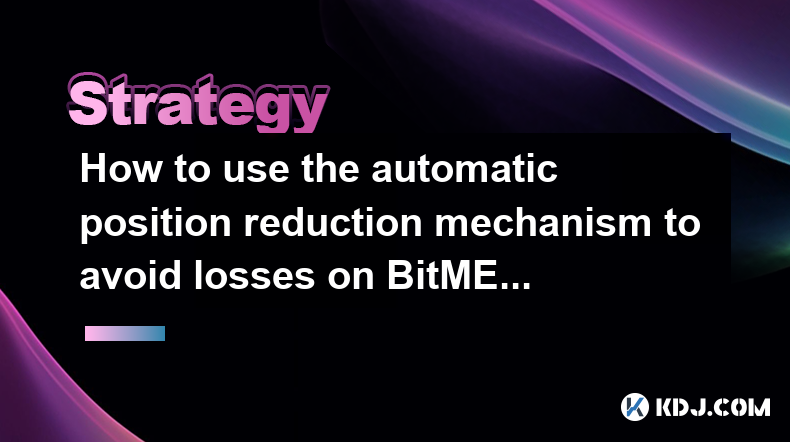
Using the automatic position reduction mechanism on BitMEX can be a strategic approach to managing risk and avoiding potential losses in the volatile cryptocurrency market. This feature, also known as Auto Deleveraging (ADL), is designed to help traders by automatically reducing their positions in certain conditions. To effectively use this mechanism, it's important to understand how it works and how it can be integrated into your trading strategy.
BitMEX's ADL system is triggered when the exchange faces a situation where it cannot meet the margin requirements of all traders due to significant market movements. In such cases, the platform will automatically close out positions starting with those that have the least unrealized profit or the most unrealized loss. This process helps to maintain the stability of the platform and ensures that the exchange can continue to operate smoothly.
Understanding the Auto Deleveraging System
The Auto Deleveraging system on BitMEX is a critical component of the platform's risk management framework. It is designed to protect the exchange from systemic risk by ensuring that all positions can be liquidated if necessary. The system prioritizes positions for deleveraging based on several factors, including the unrealized profit or loss of the position, the leverage used, and the time the position was opened.
To understand how ADL works, it's essential to know that BitMEX categorizes traders into different tiers based on their unrealized profit or loss. Traders with the highest unrealized losses are the first to be deleveraged, followed by those with the least unrealized profit. This tiered system ensures that the impact of deleveraging is spread across the platform in a fair and systematic manner.
How to Use ADL to Avoid Losses
To effectively use the ADL mechanism to avoid losses, traders need to be aware of their position's risk level and how it fits into the ADL hierarchy. Here are some strategies to consider:
Monitor Your Position's Risk Level: Keep an eye on your position's unrealized profit or loss. Positions with high unrealized losses are more likely to be deleveraged first. By managing your risk exposure, you can reduce the likelihood of being affected by ADL.
Adjust Your Leverage: Using lower leverage can help reduce the risk of being deleveraged. High leverage increases the potential for significant unrealized losses, which can place your position at the top of the ADL queue.
Diversify Your Positions: Spreading your trades across different assets and time frames can help mitigate the risk of being heavily impacted by ADL. Diversification can reduce the concentration of risk in any single position.
Stay Informed About Market Conditions: Being aware of market volatility and potential large price movements can help you anticipate when ADL might be triggered. This awareness can guide your decision-making process regarding when to enter or exit positions.
Practical Steps to Implement ADL Strategies
Implementing strategies to use the ADL mechanism effectively involves several practical steps. Here's how you can integrate these strategies into your trading routine:
Regularly Review Your Positions: Check your open positions frequently to assess their risk level. Use BitMEX's trading interface to monitor your unrealized profit or loss and adjust your positions accordingly.
Set Stop-Loss Orders: Using stop-loss orders can help you manage your risk exposure. By setting a stop-loss, you can automatically exit a position if it reaches a certain loss threshold, reducing the risk of being deleveraged by ADL.
Use Lower Leverage: When opening new positions, consider using lower leverage to reduce the risk of significant unrealized losses. This can help keep your positions out of the ADL queue.
Stay Updated on BitMEX's ADL Tiers: BitMEX provides information on the current ADL tiers, which can help you understand where your positions stand in the hierarchy. Use this information to make informed decisions about your trading strategy.
Consider Hedging: Hedging your positions can be an effective way to manage risk. By taking opposing positions in correlated assets, you can reduce the impact of adverse market movements on your overall portfolio.
Case Studies: Real-World Examples of ADL in Action
To illustrate how the ADL mechanism works in practice, let's look at a few hypothetical case studies:
Case Study 1: A trader opens a long position on Bitcoin with high leverage. The market suddenly drops, and the trader's position incurs significant unrealized losses. Due to the high leverage and large unrealized loss, the position is at the top of the ADL queue and is automatically deleveraged. The trader could have avoided this by using lower leverage and setting a stop-loss order.
Case Study 2: Another trader has multiple positions across different assets, with some positions showing unrealized profits and others showing unrealized losses. The market experiences a sharp movement, triggering ADL. However, because the trader's positions are diversified, the impact of ADL is spread across the portfolio, reducing the overall risk.
Case Study 3: A trader closely monitors market conditions and adjusts their positions accordingly. When they notice increased volatility, they reduce their leverage and set tighter stop-loss orders. As a result, their positions are less likely to be affected by ADL, even during significant market movements.
Advanced Strategies for Using ADL
For more experienced traders, there are advanced strategies that can be employed to further leverage the ADL mechanism:
Dynamic Position Management: Continuously adjust your positions based on real-time market data and your risk tolerance. This can involve scaling in or out of positions, adjusting leverage, and setting dynamic stop-loss levels.
Algorithmic Trading: Use algorithmic trading strategies to automate your position management. Algorithms can be programmed to monitor market conditions and adjust positions to minimize the risk of being affected by ADL.
Liquidity Provision: Some traders choose to act as liquidity providers on BitMEX, which can offer additional protection against ADL. By providing liquidity, traders can earn fees and potentially reduce their risk exposure.
Risk Parity: Implement a risk parity approach to balance your portfolio's risk across different assets. This can help ensure that no single position dominates your risk exposure, reducing the likelihood of being heavily impacted by ADL.
Common Questions and Answers
Q: What is Auto Deleveraging (ADL) on BitMEX?
A: Auto Deleveraging (ADL) is a mechanism on BitMEX that automatically closes out positions when the exchange cannot meet the margin requirements of all traders due to significant market movements. It prioritizes positions for deleveraging based on unrealized profit or loss, leverage, and the time the position was opened.
Q: How can I avoid being affected by ADL on BitMEX?
A: To avoid being affected by ADL, you can monitor your position's risk level, use lower leverage, diversify your positions, set stop-loss orders, and stay informed about market conditions. Regularly reviewing your positions and adjusting your strategy can help minimize the risk of being deleveraged.
Q: What are the benefits of using lower leverage on BitMEX?
A: Using lower leverage can reduce the risk of significant unrealized losses, which can place your position at the top of the ADL queue. Lower leverage helps manage your risk exposure and can keep your positions out of the ADL hierarchy, reducing the likelihood of being deleveraged.
Q: Can I use stop-loss orders to manage ADL risk?
A: Yes, setting stop-loss orders can help manage your risk exposure. By automatically exiting a position if it reaches a certain loss threshold, stop-loss orders can reduce the risk of being deleveraged by ADL.
Q: How does diversification help with ADL risk management?
A: Diversification can help mitigate the risk of being heavily impacted by ADL by spreading your trades across different assets and time frames. This reduces the concentration of risk in any single position, making it less likely that a significant market movement will trigger ADL for your entire portfolio.
Disclaimer:info@kdj.com
The information provided is not trading advice. kdj.com does not assume any responsibility for any investments made based on the information provided in this article. Cryptocurrencies are highly volatile and it is highly recommended that you invest with caution after thorough research!
If you believe that the content used on this website infringes your copyright, please contact us immediately (info@kdj.com) and we will delete it promptly.
- Why XRP Investors Are Rushing to ExoraPad Presale
- 2025-04-03 21:45:12
- Polkadot (CRYPTO: DOT) cryptocurrency isn't getting any market love these days
- 2025-04-03 21:45:12
- Despite Launching the RLUSD Stablecoin, XRP Price Dips as Trump's Tariffs Trigger Market Turmoil
- 2025-04-03 21:40:11
- Ripple Has Once Again Unlocked a Massive 1 Billion XRP
- 2025-04-03 21:40:11
- Bitcoin price crashes to $80k as Trump announces tariffs on 50+ countries
- 2025-04-03 21:35:12
- Prominent crypto analyst sparks excitement with bold forecasts for Ethereum and Ripple
- 2025-04-03 21:35:12
Related knowledge

How to use the three crows candlestick combination to determine the market top?
Apr 03,2025 at 03:18pm
Three Black Crows are a classic K-line combination form that is often used to judge the top of the market in technical analysis. This pattern consists of three consecutive negative lines, the opening price of each negative line is within the entity of the previous K-line, and the closing price gradually decreases. This pattern usually appears at the end...
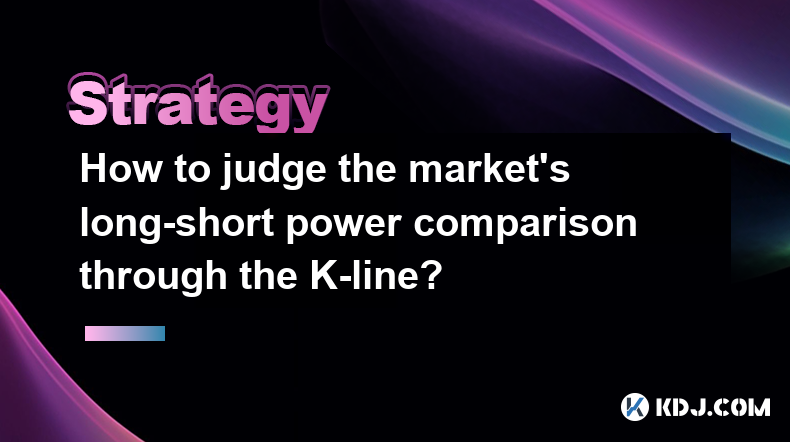
How to judge the market's long-short power comparison through the K-line?
Apr 03,2025 at 02:39pm
Judging the market's long-short power comparison through the K-line is an important skill in technical analysis. The K-line chart can not only show price changes, but also reflect the emotions and power comparison of market participants. This article will introduce in detail how to judge the market's long-short power comparison through K-lines. ...
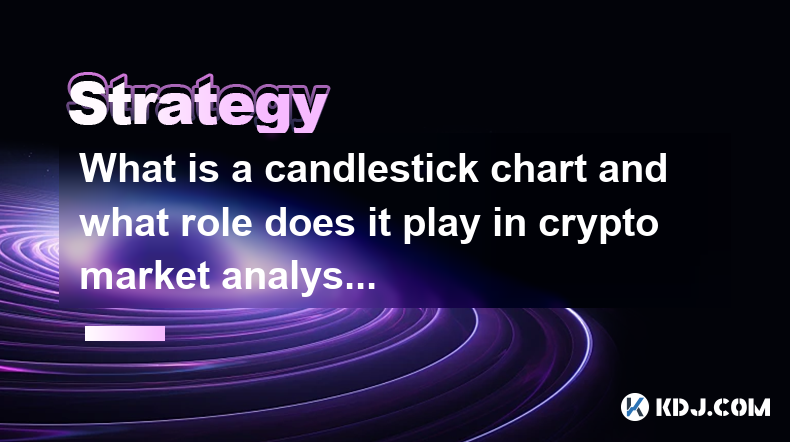
What is a candlestick chart and what role does it play in crypto market analysis?
Apr 03,2025 at 02:26pm
K-line chart, also known as candle chart, is a form of chart used to display changes in the price of financial products. In the cryptocurrency market, K-line charts are widely used to analyze the price trends of digital assets such as Bitcoin and Ethereum. This article will introduce in detail the basic structure, types of K-line charts and their specif...
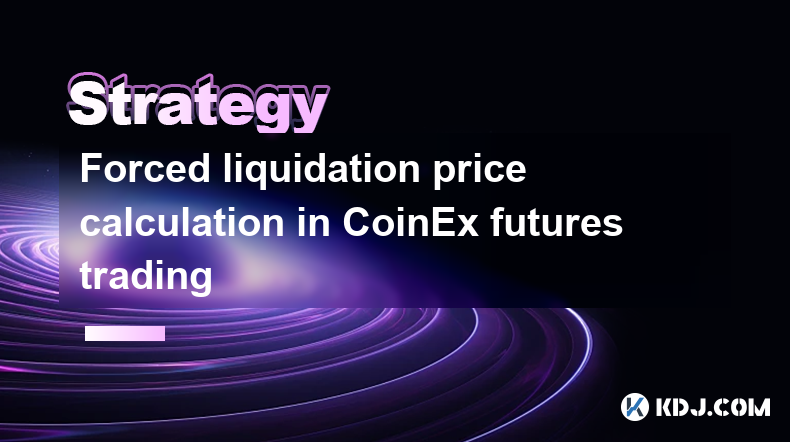
Forced liquidation price calculation in CoinEx futures trading
Apr 03,2025 at 05:35am
In CoinEx futures trading, understanding the forced liquidation price is crucial for managing risk and maintaining your positions. The forced liquidation price is the point at which your position is automatically closed to prevent further losses. This mechanism is designed to protect both the trader and the platform from negative account balances. The c...

How to use the automatic position reduction mechanism to avoid losses on BitMEX
Apr 03,2025 at 02:56am
Using the automatic position reduction mechanism on BitMEX can be a strategic approach to managing risk and avoiding potential losses in the volatile cryptocurrency market. This feature, also known as Auto Deleveraging (ADL), is designed to help traders by automatically reducing their positions in certain conditions. To effectively use this mechanism, i...
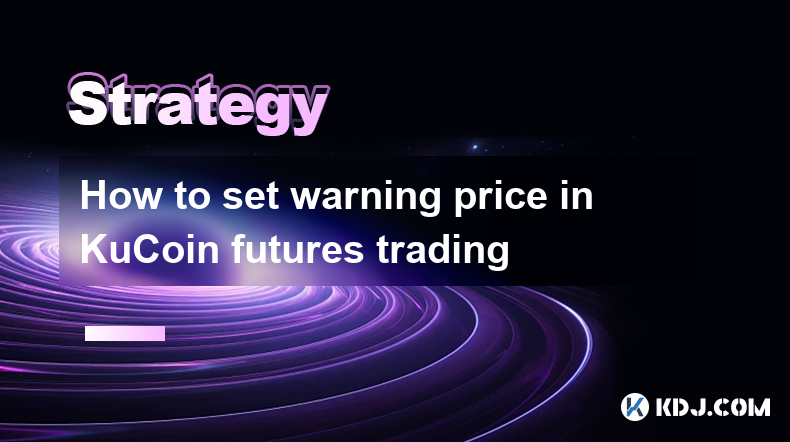
How to set warning price in KuCoin futures trading
Apr 03,2025 at 08:14am
Setting a warning price in KuCoin futures trading is an essential feature for managing risk and staying informed about market movements. This tool allows traders to receive notifications when the price of a futures contract reaches a specific level, helping them make timely decisions. To set a warning price, you need to navigate to the futures trading i...

How to use the three crows candlestick combination to determine the market top?
Apr 03,2025 at 03:18pm
Three Black Crows are a classic K-line combination form that is often used to judge the top of the market in technical analysis. This pattern consists of three consecutive negative lines, the opening price of each negative line is within the entity of the previous K-line, and the closing price gradually decreases. This pattern usually appears at the end...

How to judge the market's long-short power comparison through the K-line?
Apr 03,2025 at 02:39pm
Judging the market's long-short power comparison through the K-line is an important skill in technical analysis. The K-line chart can not only show price changes, but also reflect the emotions and power comparison of market participants. This article will introduce in detail how to judge the market's long-short power comparison through K-lines. ...

What is a candlestick chart and what role does it play in crypto market analysis?
Apr 03,2025 at 02:26pm
K-line chart, also known as candle chart, is a form of chart used to display changes in the price of financial products. In the cryptocurrency market, K-line charts are widely used to analyze the price trends of digital assets such as Bitcoin and Ethereum. This article will introduce in detail the basic structure, types of K-line charts and their specif...

Forced liquidation price calculation in CoinEx futures trading
Apr 03,2025 at 05:35am
In CoinEx futures trading, understanding the forced liquidation price is crucial for managing risk and maintaining your positions. The forced liquidation price is the point at which your position is automatically closed to prevent further losses. This mechanism is designed to protect both the trader and the platform from negative account balances. The c...

How to use the automatic position reduction mechanism to avoid losses on BitMEX
Apr 03,2025 at 02:56am
Using the automatic position reduction mechanism on BitMEX can be a strategic approach to managing risk and avoiding potential losses in the volatile cryptocurrency market. This feature, also known as Auto Deleveraging (ADL), is designed to help traders by automatically reducing their positions in certain conditions. To effectively use this mechanism, i...

How to set warning price in KuCoin futures trading
Apr 03,2025 at 08:14am
Setting a warning price in KuCoin futures trading is an essential feature for managing risk and staying informed about market movements. This tool allows traders to receive notifications when the price of a futures contract reaches a specific level, helping them make timely decisions. To set a warning price, you need to navigate to the futures trading i...
See all articles























































































